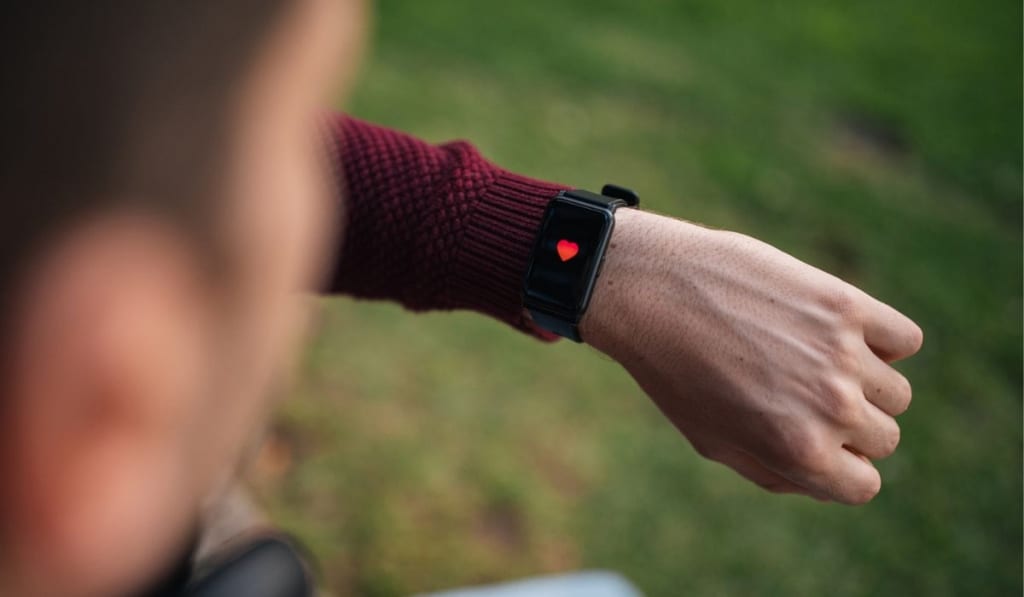What To Know About The Apple Watch’s New Cardio Fitness Feature
Monitoring cardio fitness levels isn’t something that only professional athletes or fitness enthusiasts should do. The average Joe can benefit from regularly checking their fitness levels, since they provide key insights into overall health. So, how can you check cardio levels with the Apple Watch’s new Cardio Fitness Feature?
The Apple Watch’s cardio fitness feature detects how hard your heart works during any physical activity to determine your overall fitness level. A fitness level of 15 and under is considered low, while one of 40 and above is considered high. These values may differ depending on age and gender.
Cardio fitness levels don’t just measure how far you can run or how long you can sustain a particular activity. Rather, they’re a gauge of your general health. Let’s take a closer look at what that means and how you can put the Apple Watch’s Cardio Fitness Feature to use.
What Are Cardio Fitness Levels?

There’s an important difference between “cardio fitness levels” and “fitness levels.” When we talk about fitness levels, we’re looking at four key areas: endurance, flexibility, cardio, and muscular fitness.
Ultimately, cardio fitness is a key component of your overall fitness. It’s an indication of how well your body uses oxygen to match energy demands at rest or during physical exercise, typically of a low intensity.
Cardio fitness mostly comes into play when you’re performing light- to moderate-intensity activities like swimming, cycling, jogging, and walking for extended periods.
Your organs, especially the muscles, need significantly more oxygen when you’re exercising. This oxygen is pumped from the heart and travels through the veins to reach the organs. The rate at which this process takes place is known as the VO2 max, and it’s a metric used to measure fitness levels.
Knowing your cardio fitness level or VO2 max isn’t only essential in establishing a baseline for your fitness journey, but it also gives you a glimpse of your cardiovascular health. Your fitness levels are supposed to improve with consistent and progressive exercise.
If after months of exercising regularly, your VO2 max hasn’t budged, you may have an underlying issue. Several factors can influence your fitness (age, gender, diet, etc.), but only regular exercise can significantly impact your level of fitness.
Which Factors Determine Your Cardio Fitness Levels?
Although your cardio fitness level is something you build with regular and progressive physical exercise, it’s also affected by several external factors. The most common are the following:
Age
Cardio fitness boils down to how well oxygen is pumped from the heart to the lungs and other organs. Since blood transports oxygen, the rate at which blood moves through veins is also a determining factor. As humans age, their blood vessels grow stiffer and blood becomes more viscous.
This slows down the rate at which oxygen is transported to the lungs, which ultimately affects cardio fitness.
Gender
As we mentioned above, VO2 max is a metric used to measure fitness levels. It achieves this by estimating the amount of oxygen a person uses during physical exercise. The assumption here is that higher fitness levels are associated with higher VO2 max values.
Simply put, people with higher fitness levels use up more oxygen. Oxygen consumption depends on several factors and one of them is gender. Numerous studies show that males tend to use up more oxygen than females.
Heredity
An often overlooked factor when considering cardio fitness is heredity. Some people simply have it in their DNA to have larger VO2 max than the average person.
That’s not to say that they don’t need to train regularly to build cardio fitness; it simply means that they grow their VO2 max values faster. A handful of genes impact cardio fitness by regulating the cardiovascular system and enabling it to adapt faster to increasing Oxygen demands.
Diet
Certain foods — like items rich in proteins and leafy greens — are believed to have a positive influence on cardio fitness, but very few studies exist to support this claim.
However, what is known and has been proven by numerous research and experiments, is that muscle absorbs oxygen faster than fat does. As a result, adopting a healthy diet leads to lower body fat percentages, which in turn promotes muscle growth and boosts VO2 max levels.
How to Track Your Cardio Fitness
The Apple Watch’s cardio fitness feature is a great way to get a peak at your cardio fitness levels, but you’ll need to activate it to make use of it. Simply visit the Health app on your iPhone, select ‘Heart‘ then open ‘Cardio Fitness‘ to set it up.
Thereafter, the app will send you notifications if your cardio fitness levels fall below the baseline levels for your age, gender and weight.
What’s a Good Cardio Fitness Score on the Apple Watch?
If you’re wondering how you stack up against other people in your age, gender, and weight range, fitness-wise, the fitness score on the Apple Watch can give you an estimate. Here’s an overview:
- A score between 15 and 30 is considered a low fitness score
- Between 30 and 38 encapsulates average and above average
- A score higher than 40 is considered an exceptional cardio fitness level
These scores are just estimates, and factors like age and gender can cause a huge deviation from these scores. For instance, while 40 is considered high for many people, 25 is actually a high score for a female aged 60 years old or older.
Many Apple Watch owners wonder how accurate the fitness score is, and here’s the truth: The only way to get an accurate fitness score is through multiple tests in a lab.
For a truly accurate reading, you’d need to be hooked to tons of machines while running on a treadmill. The Apple Watch (on Amazon) simplifies this process by simply monitoring your heart rate and doing a bit of math.
So, when it comes down to it, the fitness score may not be 100% scientifically accurate — but it gives you a good estimate.
How Age and Gender Can Affect Your Cardio Fitness Score
We’ve established that several factors can affect your cardio fitness level. However, age and gender are by far the most prominent factors that have an impact on your cardio fitness score.
Age
As you age, your heart and other internal organs grow less efficient at circulating blood and oxygen throughout the body. This decrease in efficiency directly impacts the VO2 max negatively.
According to studies, our fitness levels decline by 3-6% every year in our 20s and that number multiplies in our 30s. Consequently, your fitness score will naturally be lower as you age.
Gender
Men generally have higher fitness scores because of their body’s natural ability to use up more oxygen, and they therefore can produce more physical output during physical activities in certain cases.
How to Improve Your Cardio Fitness Levels

Cardio fitness doesn’t simply involve your muscles or lungs; rather, it’s a measure of how numerous relevant organs work together in harmony to supply your body with the necessary oxygen and energy to complete a session of physical exercise.
The best way to improve your cardio fitness levels is to tackle all the aspects mentioned above. Simply stated, you need to partake in activities that stimulate the lungs, the muscles, the joints, and so forth.
Being progressive is key here; once your body grows comfortable with a certain level of physical activity, turn up the heat and make it a bit more intense.
Cardio fitness is not to be mistaken with endurance and strength. While both components play a role in cardio fitness to an extent, they’re not the focal points. Instead, cardio fitness is derived from low to moderate-intensity activities performed for extended periods.
Generally, only the timespan of these activities is increased to improve fitness.
Efficacy-wise, exercises like jogging, swimming, cycling, and hiking yield the best results. Since these activities are normally performed monotonously for extended periods, they can get tedious and boring.
Listening to upbeat music on your Apple Watch or another MP3 player (on Amazon) is a great way to relieve the boredom.